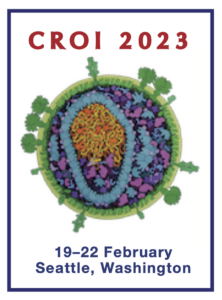CROI 2023: Efficacy of N6LS monotherapy correlated with baseline factors
10 March 2023. Related: Conference reports, Antiretrovirals, CROI 30 Seattle 2023.
 CROI 2023 included a study of baseline factors influencing maximum viral decrease and time to viral rebound for treatment naive participants receiving the N6LS (VH38101019) bNAb. [1]
CROI 2023 included a study of baseline factors influencing maximum viral decrease and time to viral rebound for treatment naive participants receiving the N6LS (VH38101019) bNAb. [1]
A modest correlation was observed between baseline IC80 and CD4 count and the magnitude of virologic response.
Treatment-naive people living with HIV were randomised to receive either 40 mg/kg (n=8) or 4 mg/kg (n=6) infusion of N6LS as monotherapy. Participants were male (n=13), white (n=11) and Latinx (n=10). Baseline viral load was 4.31 log copies/mL (range: 3.13 to 5.24) and median CD4 count was 369 cells/mm3 (range: 190 to 700).
Virologic response was observed for all participants. Median viral decrease was –1.72 log copies/mL (range: –2.60 to –0.60) and –1.18 log copies/mL (range: –2.18 to –0.30) for the 40 mg/kg and 4mg/kg groups, respectively.
For the 40 mg/kg group, median time to viral nadir was 16 days (range: 5 to 16 days) and rebound occurred after 35 days (range: 12 to 78 days). Participants in the 4 mg/kg responded faster with a median time to nadir of 9 days (range: 7 to 16 days), but time to viral rebound was also faster (median: 18 days, range: 14 to 29 days).
Baseline IC80 and CD4 count modestly correlated with the maximum decline of viral load and the time to viral rebound. A weak correlation was also observed between lower baseline viral load and increased virologic response.
Adverse events were reported by 9 participants and all drug- and ISR-related AEs were grade 1. Alternative dosing options are being evaluated in BANNER part 2.
Reference
This report was first published on 2 March 2023.

